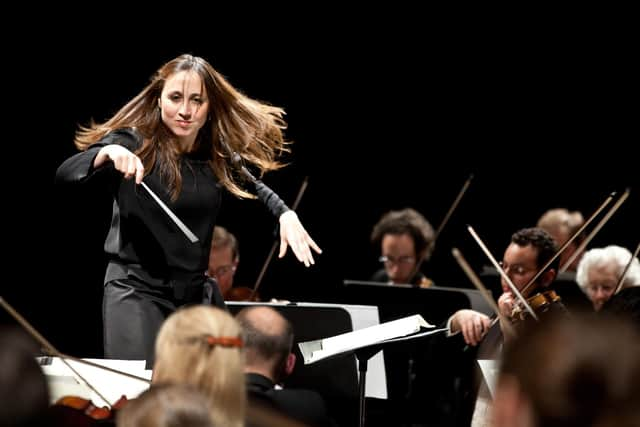Music review: SCO & Joana Carneiro, Queen's Hall, Edinburgh
SCO & Joana Carneiro, Queen’s Hall, Edinburgh ****
For a concert featuring so much dance music, it felt only right that the conductor’s movements so often seemed like choreography. Joana Carneiro missed a couple of dates in recent SCO seasons due to pandemic restrictions, but she’s since become something of a regular visitor, and a galvanising force of nature with the band too. She was a nimble, athletic presence on the podium, drawing a bold, gutsy account of Stravinsky’s Danses concertantes from the orchestra, her clean, precise gestures the ideal match for the composer’s clipped, unpredictable rhythms, and looking like she was enjoying every second.
It was an infectious enthusiasm that she carried over into her closing ballet music from Mozart’s opera Idomeneo – hardly the profoundest music the composer ever created, but delivered with unwavering belief, sparkle and energy. It was as though Carneiro was out to ensure that every musical gesture conveyed meaning – in other hands, that might have meant fussiness, but she maintained a clear view on the music’s broader sweep too.
Advertisement
Hide AdAdvertisement
Hide Ad

Carneiro’s unfussy directness made an ideal match, too, for the effortlessly eloquent playing of SCO principal flautist André Cebrián, who stepped out of the orchestra as soloist in Mozart’s Flute Concerto in D before the interval. He’s a charismatic player, delivering every note as if his life depended on it, but his commitment was matched by a disarmingly pure yet richly rounded sound and a remarkable agility across the instrument’s range. He had a lot of fun with impromptu bits of ornamentation in Mozart’s gleeful finale, but changed the excited mood entirely for a deeply poignant encore of the slow movement from Mozart’s Flute Quartet K285. With a beautifully nuanced Debussy Children’s Corner as opener, it felt like rather an eclectic collection of pieces, but it was held together by a warmth and generosity from flautist, conductor and orchestra alike.